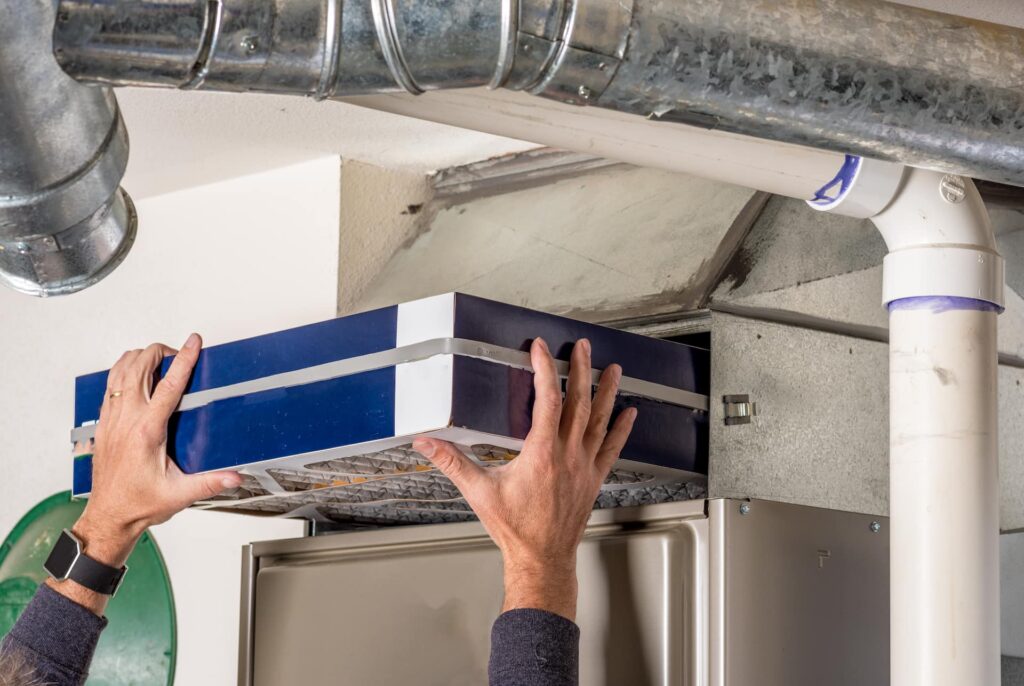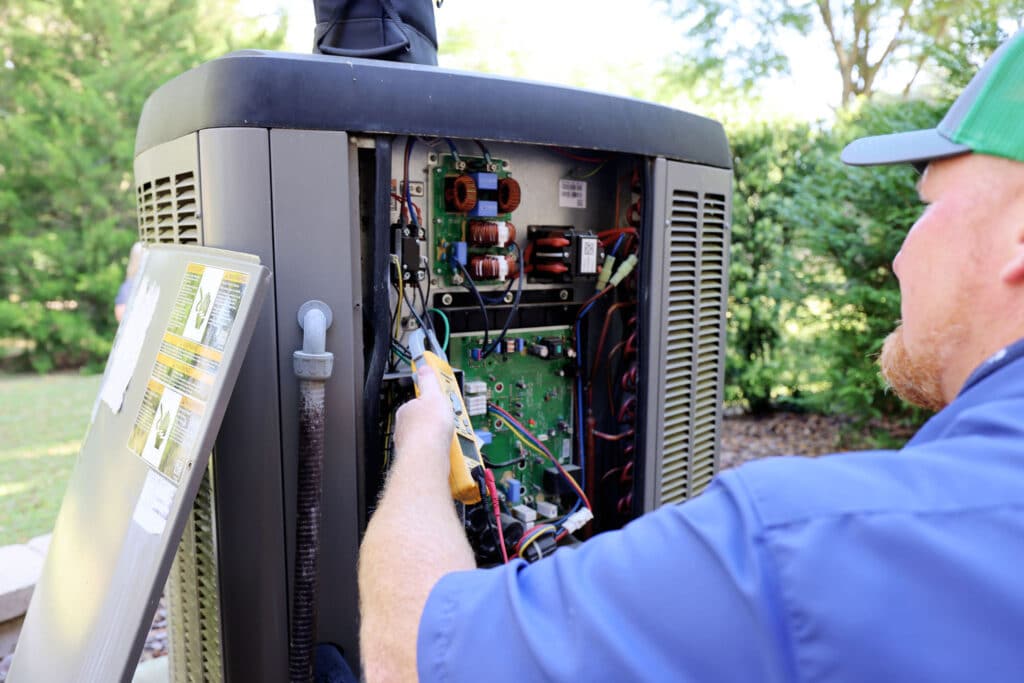Did you know that your home’s air quality could be worse than the air outside? Unfortunately, many people live in a home with poor air quality—and they may not even be aware of the issue. But constant exposure to air pollutants can cause illnesses and long-term health effects.
So you may be wondering, “How can I test the air quality in my home?” Today, we’re here to answer this question and give you our professional insight on the importance of excellent indoor air quality!
Why Is Air Quality Important?
Everyone has a general understanding of why the air we breathe is important to our health and well-being, but you may not be fully aware of all the ways air quality can impact your body and your lungs. According to the Environmental Protection Agency (EPA), some people may experience immediate effects from poor air quality, especially if they are already predisposed to allergies or asthma. For others, the immediate impacts may be illnesses or disease.
However, one of the bigger concerns stated by the EPA is the long-term effects. In other words, while you may not experience any symptoms due to poor air quality at the moment, it could have consequences down the road—including, but not limited to, heart disease and even certain cancers. Investing in good air quality for your home protects your health both right now and in the future.
What Are the Signs of Poor Air Quality?

There are several factors that contribute to poor air quality. For example, living with a pet or being in an area with high outdoor pollution can impact your indoor air quality. These may cause mild symptoms, but other factors, such as a gas stove or certain chemicals in paint or furniture, can yield much more serious health effects if they’re polluting the air in your home.
Depending on what’s causing poor air quality in your home, you may notice different signs. However, some common signs people see include:
- Runny noise
- Scratchy throat
- Itchy eyes
- Mold or mildew along your walls, ceiling, or near moist areas
- High humidity in your home
- Dust
Some of the more serious signs of poor air quality are:
- Sudden headache
- Nausea or vomiting
- Confusion
- Trouble breathing
- Loss of consciousness
- Visible appearance of smoke in your home
If you notice any of these symptoms, you should leave the home immediately and call for emergency services, such as the fire station.
5 Ways to Test the Air Quality in Your Home
If you’re concerned about the air quality of your home, there are several indoor air quality tests you can run to confirm the severity and the potential cause. We’ll go over the five most common ways to check your indoor air quality.
1. Mold Test
Sometimes, mold is not always visible to the eye, but the spores it releases can lower your home’s air quality, irritating allergies and asthma. To help detect the presence of mold, you’ll want to find a mold test that’s designed to test the air in your home.
Usually, these tests come in the form of an air pump or a petri dish. After sampling or swabbing according to the instructions, you’ll send the test back to a lab to get your results. These tests don’t always indicate the type of mold detected, but the presence of mold could mean your air ducts need to be professionally cleaned.
2. Air Quality Monitor
If you want to constantly have eyes on your home’s air quality, you may want to invest in an air quality monitor. While you can find a device specifically designed to read your air quality, many modern smart thermostats have this feature already embedded. These monitors work by reading the toxins in the air (such as toxic gases, formaldehyde, VOCs, etc.) or by evaluating the particulate matter (PM) in the air. If the device detects air quality issues, it will alert you so you can act accordingly to protect yourself and your family.
3. Radon Test
Radon is a radioactive gas that can cause serious health effects in high doses. While you are likely exposed to radon daily, most of your exposure is low enough to cause no issues. But you’ll want to confirm that your home doesn’t have high levels of radon.
Radon tests allow you to see how much radon is in your home in a short-term or long-term timeframe. For example, some radon tests will give you results in just a few days, while others will give you your average exposure over a year. You can also find air quality monitors that specifically measure radon levels consistently.
4. Carbon Monoxide Detector
Every home should have a carbon monoxide detector, especially if your home uses natural gas for your stove, oven, or heating. What makes carbon monoxide so dangerous is that it has no smell or visible appearance, earning it the nickname “the silent killer.” Experiencing symptoms can mean you’ve already been exposed to too high of levels—a detector warns you of elevated levels before it becomes a danger to your health.
5. Professional Air Quality Testing
If you want to know exactly how good or poor your air quality is, HVAC companies, like our team at Comfort Temp, can professionally test your air for pollutants and toxins. This will give a thorough understanding of your air quality and what exactly is in your air (mold, gases, VOCs, etc.). With this full understanding of your air quality, the company should be able to provide you with air quality solutions that will target the specific pollutants found in your home.
How to Improve Indoor Air Quality

There are some simple ways you can improve your indoor air quality. We have an in-depth article on the subject here, but if you want some quick tips and tricks, here are three of our top ones!
Use Ventilation
One of the ways your air quality can get worse is by pollutants that naturally get trapped inside your home over time. For example, something burning in the oven, having multiple pets, or even just burning candles can contribute to poor indoor air quality.
A good way to reduce these air pollutants is by utilizing ventilation. This could be as simple as opening a window, using your kitchen’s exhaust fan, or getting professional ventilation services. Increased air flow allows for pollutants and humidity to escape while giving you some fresh, cleaner air to breathe.
Keep Up with Maintenance
Clogged air ducts and old air filters can cause mold and dust to be blown from your air vents. By taking care of your HVAC regularly, you’re taking care of the air you breathe. Something as simple as changing your air filters regularly and having a professional inspect your air ducts can make a huge difference in the quality of your home’s air.
Professional Air Quality Services
Florida is well known for its humidity and high pollen count, so even if you do everything right, you may still struggle with poor air quality. Sometimes, your home may need a little extra help to have good indoor air quality, especially if someone in your family is sensitive to pollutants.
That’s where professional air quality services and products come in. With professional-grade air purifiers, dehumidifiers, filters, and more, you can enjoy your home, knowing that you have the best air quality possible. Talk with your HVAC professional to see what products will work best for your home.
Breathe Clean, Fresh Air with Comfort Temp
You shouldn’t have to worry about the air you breathe in your own home. That’s why our team at Comfort Temp offers comprehensive air quality services to help protect you and your family.
We can inspect your home and HVAC unit for any potential air quality problems and suggest professional products that can help improve your home’s indoor air quality. Stop worrying about your home’s air quality and get in touch with our team to breathe clean, fresh air no matter the season!


